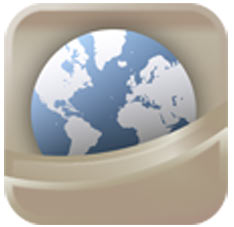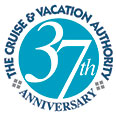The Best Time to Cruise to Almost Every Destination
--by Laura Randall
One of the most common questions we hear time and time again is this one: When is the best time for a cruise vacation to Europe (or the Caribbean, Canada/New England, Hawaii or Alaska)?
It's a question whose answer depends on many variables -- so it's not an easy one, at face value, to answer. Fall foliage enthusiasts, for instance, will find September and October the best time to take that Canada/New England cruise, whereas water sports-lovers (and families) much prefer to sail the region in the summer when school is out and temperatures are warm for swimming. In Alaska, your optimal sail dates will vary depending on your preferences for wildlife-viewing, fishing, bargain-shopping, sunshine, warm weather and catching the Northern Lights.
So what factors influence your timing? Do you need to schedule around school breaks? Is a holiday week the best time for your cruise? Is your main goal to escape frigid winter temperatures at home? Or maybe you have lots of flexibility (or a tight budget) and don't mind making a few tradeoffs in timing for a steal on a cabin. Your answers will influence which sailing season is your best bet.
For most cruise regions, there are periods of peak demand (high season), moderate demand (shoulder season) and low demand (low season). Not so long ago, high season tended to be when the weather was best in a particular area (and when all the northerners flocked to the sun), but as more and more families take to cruising, the summer months have become a peak-demand period, regardless of the weather (at home or in the region). Families especially need to book high-season sailings as early as possible because some cruise lines limit the total number of children per sailing, and each ship has a limited number of cabins that can accommodate three or more people.
Slow and shoulder seasons yield the most bargain opportunities in year-round destinations where the off season is longer. In places like Alaska and Bermuda (where you have a five- or six-month sailing season), the off season is typically a matter of weeks on either end of the season. And, for regions like the Panama Canal and Northern Europe, almost all sailings are priced "in season."
Low seasons have shrunk in many areas, thanks to the boom in new cruising destinations and homeports, and the smart thinking of the cruise lines in repositioning ships to the places people want to sail and at the times when they want to sail them. As one cruise line representative said, "That's the great thing about a cruise ship. We don't have to sit and wait it out for the season to change; we can follow the sun and move the ships to where people want to go."
The following is a list of cruising regions where you can still find some variability in seasons, along with the advantages and tradeoffs for sailing within each of them.
ALASKA
High Season: June - August
Quirks & Perks of Sailing in Season: Temperatures are at their warmest (highs: 50's - 70's), plus the further into the summer you are, the better your chances of seeing wildlife on the various expeditions. The downside: Demand is so strong, you need to book months (better yet, a year) in advance to get the best land and tour packages. Keep in mind, with so many ships sailing Alaska now, there can be a tremendous amount of congestion in small-town ports.
To minimize joining the masses, select a ship that sails an off-schedule (such as Holland America's Wednesday departures and Carnival Cruise Lines' Tuesday departures). For a pricing advantage, northbound glacier routes tend to be cheaper than southbound.
Low Season: May and September
Quirks & Perks of Sailing in the Off Season: Shoulder-season perks include smaller crowds and cheaper prices as a result of the weather gamble (highs: 50's - 60's) and the possibility of snow. May sailings typically encounter less rain than summer cruises, and the scenery is arguably more beautiful with more snow-capped mountains; September cruisers benefit from end-of-season souvenir bargains and a possibility of catching the Northern Lights. A few caveats to note: Shore excursions have a greater chance of being canceled than in high season, especially boat and helicopter tours. In addition, Denali National Park has been known to close in September due to snow.
AUSTRALIA
High Season: Late November to March
Quirks & Perks of Sailing in Season: More lines are bringing their ships to Oz, offering cruises both within the region and as part of larger South Pacific and world sailings. Winter in North America is summer in Australia, so expect near-perfect temperate conditions in major ports of call like Sydney, Adelaide and Perth on the western side and a sub-tropical climate in the northeast Queensland region. It's also typhoon season, which may affect some ports of call (such as Brisbane and Cairns) and lead to some rough sailing waters. Aussies often vacation between late December and late January, so expect big crowds and jammed ports during that time.
Low/Shoulder Season: May - September
Quirks & Perks of Sailing in the Off Season: While Australia's climate varies widely, winter temperatures are rarely extreme. Crowds are fewer, and there are bargains to be had, especially on larger ships and Great Barrier Reef cruises that are available year-round. The downside: Expedition cruises and sailings to Tasmania are often limited during the rainier months of June, July and August.
BERMUDA
High Season: June - August
Quirks & Perks of Sailing in Season: You get to pick from a wider selection of ships (and from a variety of East Coast homeports), all at a convenient time to vacation from work and school. Plus, water temperatures are ideal for water sports. Children can find fellow playmates onboard during this family-friendly season, while those craving a more adult-oriented voyage might want to select a ship that doesn't cater to kids. The tradeoff: Expect steamier temps and more crowded ships than you'd find in the slower months.
Low/Shoulder Season: April - May; September - October
Quirks & Perks of Sailing in the Off Season: Humidity-haters will love the much milder temperatures and breezy weather; however, there are a few weather trends to note. While Bermuda does not have a month besieged by rain, October tends to be its rainiest. And, Bermuda's big weather caveat: Hurricane season traditionally affects the island at least once a year between late August and October. Whereas in the Caribbean, a hurricane threat will have you substituting an island or two, here your Bermuda cruise can turn into a jaunt to Canada/New England or the Bahamas. If your heart is set on Bermuda, May is your best bet for shoulder-season travel.
CANADA/NEW ENGLAND
High Season: September and October
Quirks & Perks of Sailing in Season: Can you say fall foliage? This time of year fetches high prices on land and sea for quintessential autumn in New England. There you can see the leaves at various stages of color as you cruise up the East Coast to Canada, plus the cooler temperatures make for nice strolling about in the various port cities. And, since most children are back in school, you can enjoy a slightly quieter cruise. Just be careful of October cruises, when the temperatures can start getting quite chilly, especially the farther north you travel.
Low/Shoulder Season: May - August
Quirks & Perks of Sailing in the Off Season: The excellent summer weather makes touring the Canadian towns especially nice. (Highs hover in the low 70's, as opposed to the 50's in the fall.) It's also the best time for water sports enthusiasts and families, thanks to the warm temperatures in the water and out. Carnival and Holland America are good bets for off-season sailings.
CARIBBEAN
High Season: Late June - August; Christmas and New Year's weeks; February - mid-April
Quirks & Perks of Sailing in Season: The two main groups of cruisers sailing in the peak season are families off from school and northerners seeking a respite from the cold. School holidays are a great time to sail with kids -- children's programs are in full swing, and they're available even on lines that don't normally cater to kids. Plus, it's easy for children to make friends onboard.
The tradeoff: Prices are higher, especially when you add winter flight delays that can be time-consuming and costly (though four-season cruising to the Caribbean from multiple homeports in the Northeast, Southeast and Gulf Coast means residents of those areas can save money by driving to their departure ports). Plus, the summer cruise season coincides with hurricane season, though the storms don't start to peak, usually, until mid-August.
During spring break, when thousands of people are flocking to Florida resorts and cruise ports, you will have to think about booking your airline tickets almost farther out than your cruise, and prices can be high. People looking for peace and quiet away from kids will want to avoid break weeks like the plague, as ships are at their highest capacity, which means crowded ports and mega-ships run amuck with rowdy kids and teens.
Low Season: Late April - May; September - early January (excluding holiday weeks)
Quirks & Perks of Sailing in the Off Season: The biggest benefits are the great weather and smaller crowds, usually at hundreds less per person than you'd pay at peak times. The fall especially is a great time for last-minute availability and bargains. Hurricane season (June - November) still poses a threat; if a storm is brewing somewhere in Florida or the Caribbean, it can mean a change in ports of call and a challenge getting to ports of embarkation as the ship alters course to avoid the storm. Even if your cruise isn't impacted, you can still experience rain and rough seas.
EUROPE RIVER CRUISES
High Season: April - October
Quirks & Perks of Sailing in Season: A flotilla of specially designed river ships and cruise barges offers a unique and port-intensive experience for travelers who want to see more of Europe's heartland, especially in spring and fall. Spring can mean flowers in glorious bloom (favorites are the spring Tulip Time cruises though the Netherlands and Belgium), but also keep in mind that heavy rains and early spring flooding can make the rivers swell and the locks impassable. If boats can't move, you'll be taken to the sights by motorcoach. While some cruises will tailor port itineries to families, don't expect to see as many kids there as you do on the bigger ships, even during the summer.
Low Season: March; Late November - December
Quirks & Perks of Sailing in the Off Season: Most European river and canal ships operate seasonally and shut down in January and February. When operating, however, the cruise itineraries are not weather dependent, so a March sailing means you get to enjoy the castles, cathedrals and quaint shops without the summer crowds. A handful of river ships, operated by cruise lines like Viking River and Avalon, also offer special pre-Christmas market shopping cruises to Germany, Austria and Eastern Europe. The weather can be bitterly cold, but for shoppers and Christmas-lovers it's a unique way to experience the charming seasonal markets along the riverside.
HAWAII
High Season: Late December - April
Quirks & Perks of Sailing in Season: The winter months -- especially the Christmas holiday season from late December to the first week of January -- are the most popular times to visit Hawaii, and air prices are at their most expensive if you're flying to Honolulu. But it's not necessarily the best time to visit weather-wise; though temperatures remain warm, the rainiest weather hits the islands between December and March.
The widest selection of ships is available in late winter and early spring; this is also the finest time of year for whale-watching.
Summer is also popular for general travel to Hawaii because it's "family season," but only Norwegian Cruise Line offers cruises at that time. That's because Norwegian is the only line to offer year-round Hawaii cruises. If you're considering a summer cruise, note that August can be hot and humid with rough seas.
Low/Shoulder Season: May - June; September - mid-December
Quirks & Perks of Sailing in the Off Season: Great weather and less-crowded ships (fewer third and fourth passengers since kids are in school) can be found on late-spring sailings. Hurricanes rarely affect the islands, but they come closest in September, bringing hot, humid weather. They can also kick up storms that lead to rough seas and less-than-ideal snorkeling conditions.
Good deals are often available in the less-traveled window between Thanksgiving and Christmas vacation. Late September and October can also see a large selection of cruise ships visiting the islands, as ships tack on Hawaii cruises after the end of the Alaska season and before transitting to their next seasonal homeport.
MEDITERRANEAN
High Season: May - September
Quirks & Perks of Sailing in Season: Both European and American families flock to many of the summer sailing dates (especially in August), making for a nice cultural mix of passengers and plenty of onboard, kid-friendly activities. The tradeoffs are bigger crowds, higher prices (both cruises and airfares) and steamy temperatures that may sap your sightseeing energy. As much of Europe goes on holiday in August, you may find restaurants and other establishments closed. September is an increasingly popular time to cruise the western Mediterranean because you can avoid the school kids and still enjoy warm temperatures.
Low/Shoulder Season: October - April
Quirks & Perks of Sailing in the Off Season: Early-spring and late-fall sailings offer the advantage of more competitive fares and fewer crowds in port. Plus, the weather is often mild (though March and November can be rainy). A very few ships actually remain in the region year-round; look for lower fares and cruises to the warmer regions of the Mediterranean, such as Spain, Morocco and the Canary Islands.
MEXICAN RIVIERA
High Season: Holiday weeks; February - mid-April
Quirks & Perks of Sailing in Season: Here, too, holiday sailings and break weeks continue to be in high demand with families. The weather is dry, with temperatures in the 70's - 80's, making it a popular escape for northerners, and February and March are prime whale-watching months. On the negative side, college-age youths often cram into port destinations like Ensenada and Puerto Vallarta at this time, creating a wild and boisterous atmosphere.
Note: The summer season is a popular travel time for families, but it offers a lot less choice because most lines reposition their ships to Alaska for the summer. Carnival is the exception, offering year-round Mexican Riviera sailings.
Low/Shoulder Season: Early January and May; October - November
Quirks & Perks of Sailing in the Off Season: In the fall, a more adult-oriented atmosphere can be found, along with a variety of cruise options. Early January and May dates can be an especially good value with smaller crowds and fewer kids, since school is back is session after holiday or spring break times. The downside: the weather can be unpredictable, ranging from hot and humid to downright chilly, with temps dipping into the 40's and 50's.
NORTHERN EUROPE
High Season: June - August
Quirks & Perks of Sailing in Season: Northern Europe is at its loveliest during the summer months, with ports that line the Baltic Sea and Norway's fjords. Temperatures are balmy (even occasionally steamy), skies are generally sunny, and the cities turn themselves inside out -- life is lived out of doors, whether it's getting out on the water or sipping beers at sidewalk cafes. On the flipside, summer cruises to the Baltic are often among the most expensive Europe cruises out there.
Low/Shoulder Season: May and September
Quirks & Perks of Sailing in the Off Season: Kids are back in school, ports are less frenetic, and the weather -- and foliage (whether spring-like or autumnal) -- can be lovely in late spring and fall. Temperatures may be a bit more brisk at those times, but you'll avoid summer crowds, and cruise fares tend to be lower.
Note: Some lines, including Hurtigruten and Fred. Olsen, offer cruises in winter, the epitome of low season. While the lines tout the spectacular Northern Lights display, keep in mind that unpredictable weather (bitter cold and snow) can obscure the scenery and force you inside much of the time.
SOUTH AMERICA
High Season: November - March
Quirks & Perks of Sailing in Season: The two primary South American cruising routes are the steamy and sultry equatorial Amazon and around-the-horn or channel cruises between Buenos Aires and Valparaiso, Chile. The high season occurs during South America's summer, but be prepared for varied climates that can change rapidly wherever you go. The warm mid-70's temps you're enjoying could become the windy, rainy low 40's in the blink of an eye. Plus, when it's steamy in Buenos Aires, it can be quite chilly in ports like Punta Arenas and Ushuaia.
The good news: You get to choose from the widest selection of ships and itineraries at this time. However, ships fill up fast with South Americans on vacation. You can also expect large crowds over holidays like Christmas, New Year's Eve, Easter and Carnival Week. However, you can find high-season bargains in the weeks between Thanksgiving and Christmas.
High season is pretty much year-round in the Galapagos Islands, where the warm and tropical climate is relatively unchanging.
Low/Shoulder Season: April and October
Quirks & Perks of Sailing in the Off Season: Avoid the crowds by traveling in the shoulder months of April and October, when weather is often mild and there is less competition for top tourist attractions.
In the Galapagos, cruising waters can get choppy in August and September -- not appealing for those prone to sea sickness.
TAHITI/SOUTH PACIFIC
High Season: May - October
Quirks & Perks of Sailing in Season: The South Pacific's high season actually occurs during the winter months. At this time, the weather is more favorable, as it rains less frequently and there's a reduced possibility of tropical cyclones (though the strongest trade winds usually kick up at this time, too).The region's dry season dovetails nicely with wedding season and school summer holidays, making cruises popular with honeymooners and European and American families on extended vacations.
Low/Shoulder Season: November - April
Quirks & Perks of Sailing in the Off Season: This is the South Pacific's summer and the wettest time of year, when rain, temperatures and humidity increase. However, prices are significantly lower, and water temperatures are still perfect for swimming. March and April tend to get less rain than earlier in the summer season.

With each issue of Ultimate Experiences Online, you’ll enjoy a collection of articles, slideshows and videos that we will inspire you to make your travel dreams a reality.

To help you discover ways to explore the world, we're pleased to share our The Travel Magazine Online.
 Save money and escape the crowds. Hot Deals and multi-port packages. Savings of up to 50%!
Save money and escape the crowds. Hot Deals and multi-port packages. Savings of up to 50%!

Our free app that allows you to carry all of the destination information you need while traveling, right in your pocket!

We recommend optional travel insurance that protects you in the event of having to cancel your trip avoiding travel vendor cancellation policies and more!





